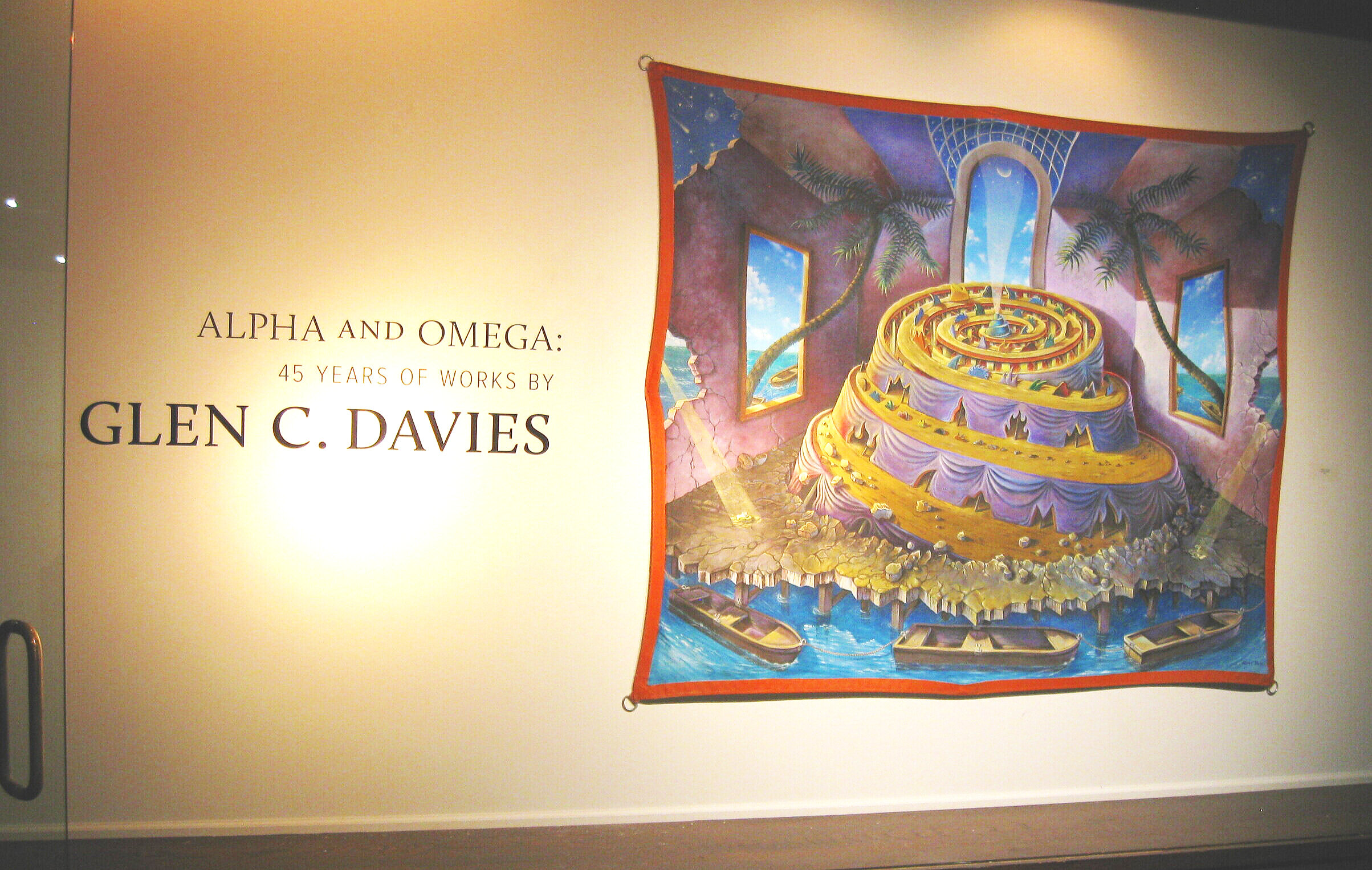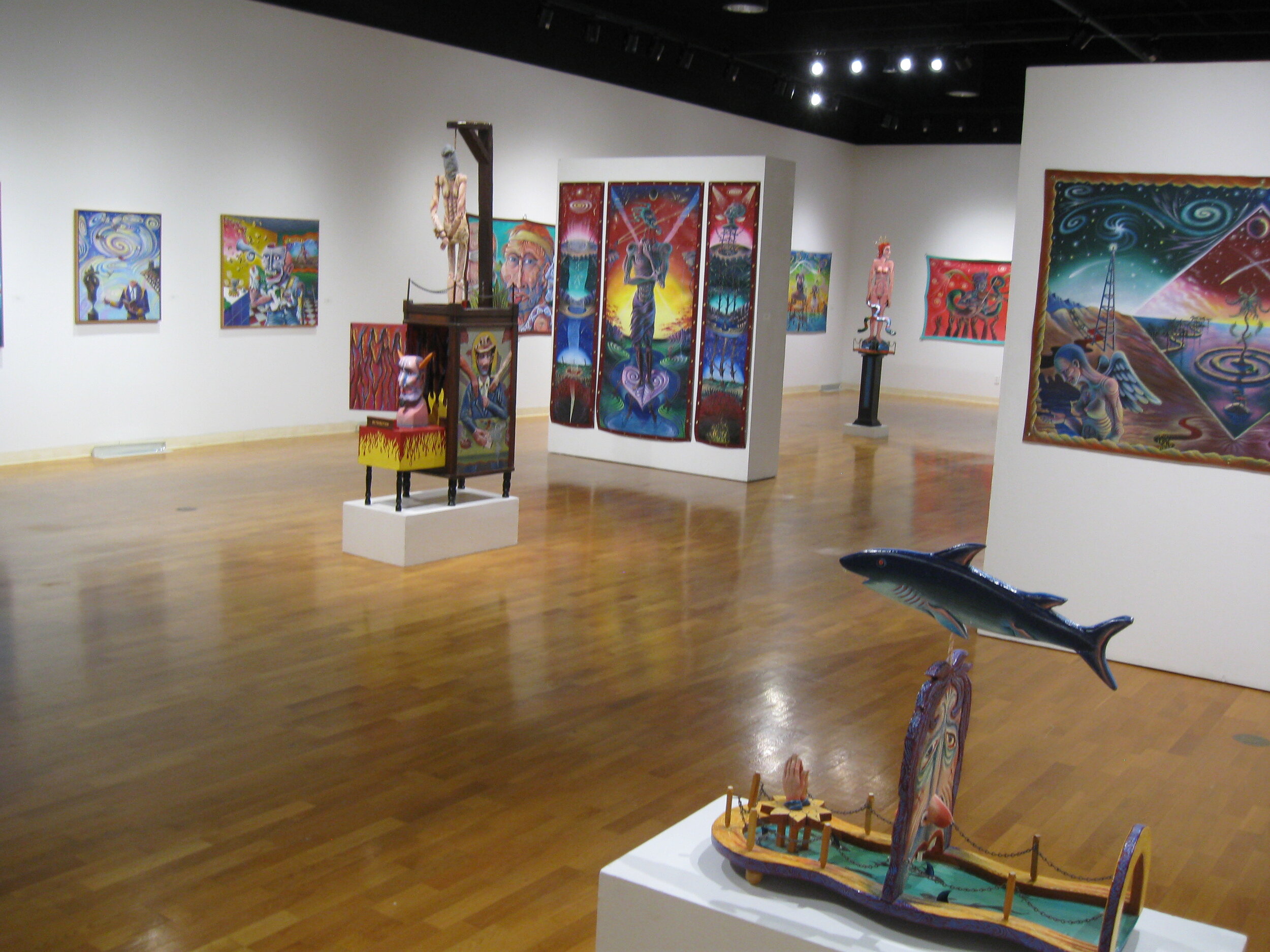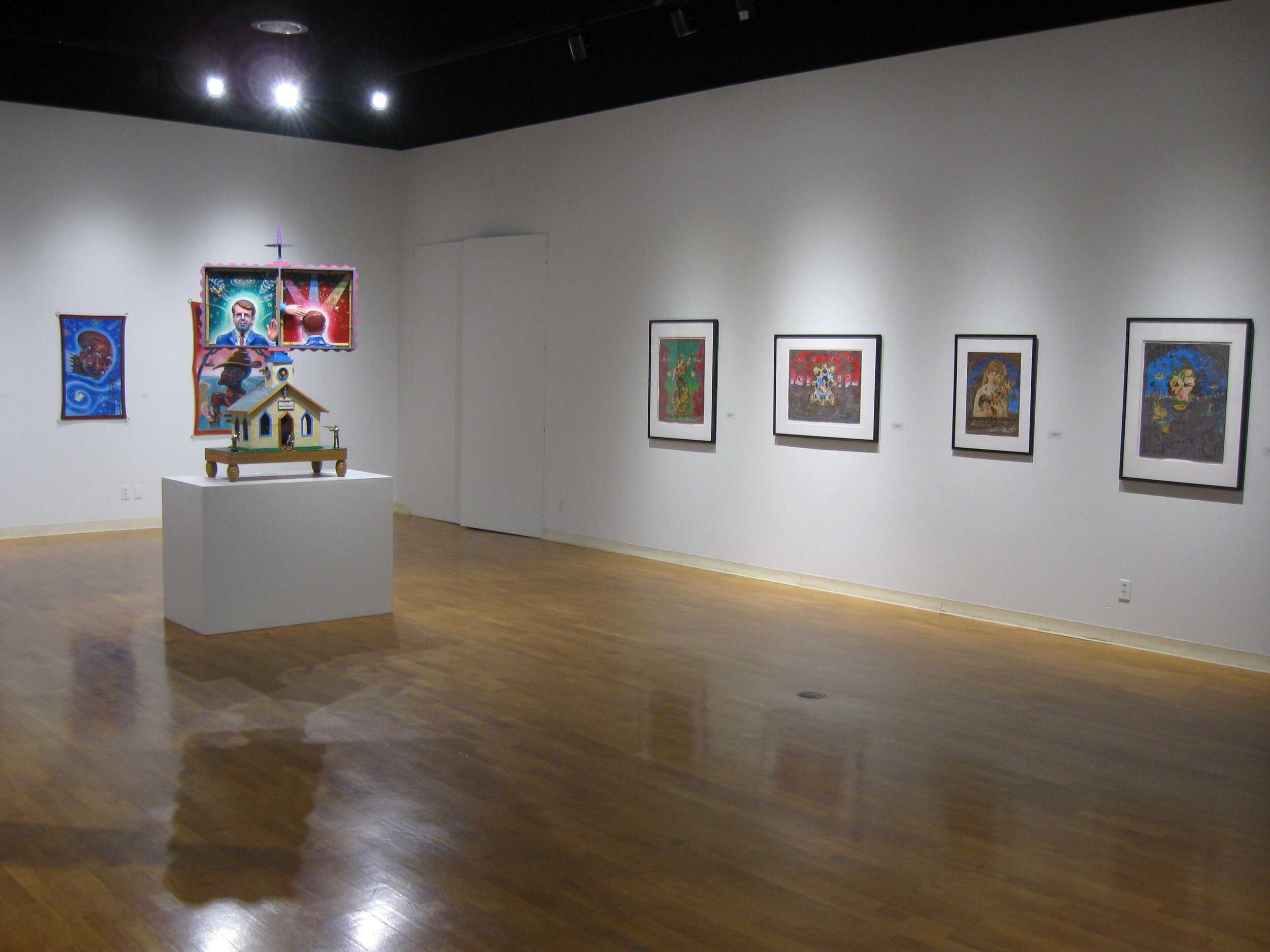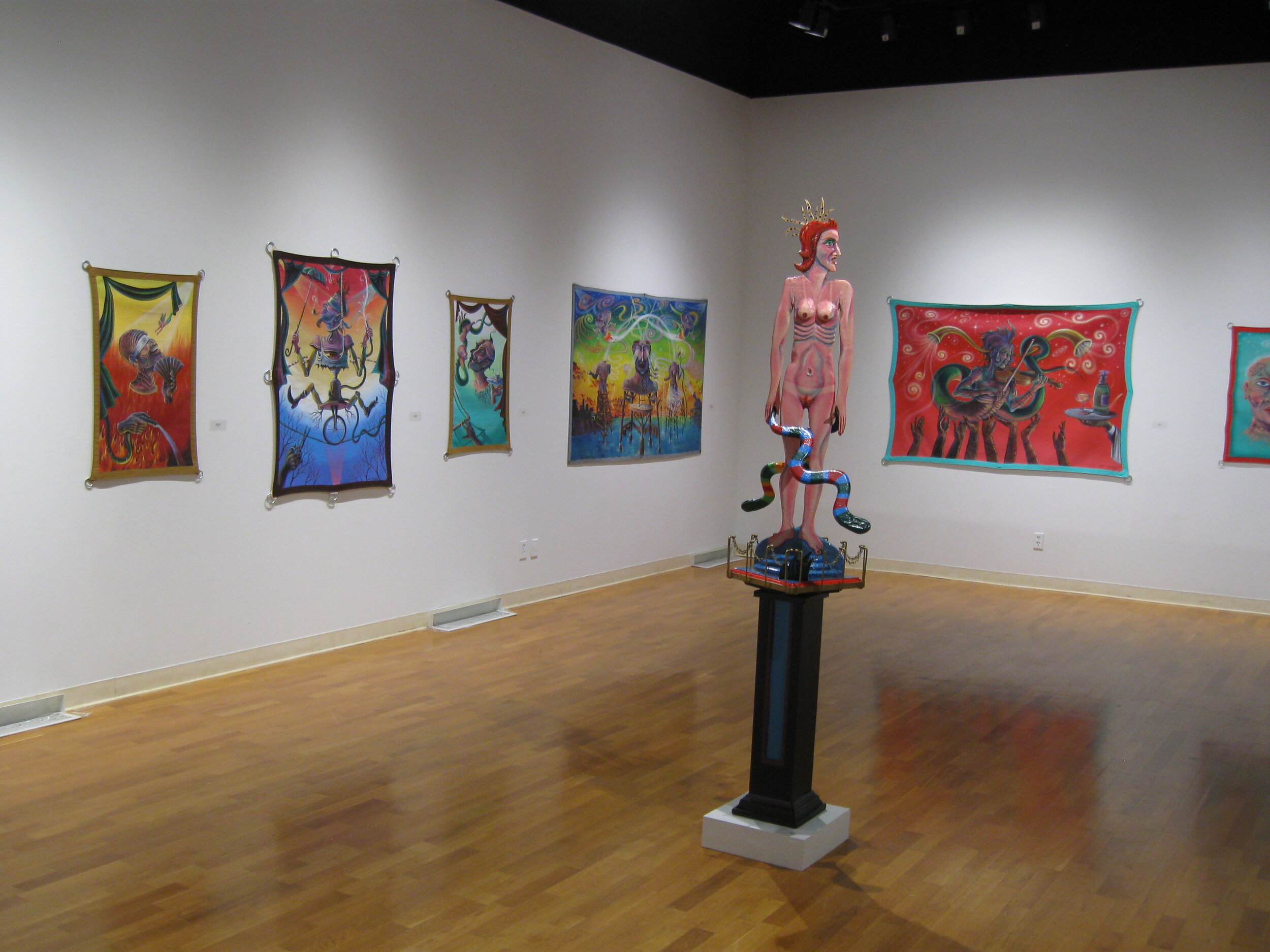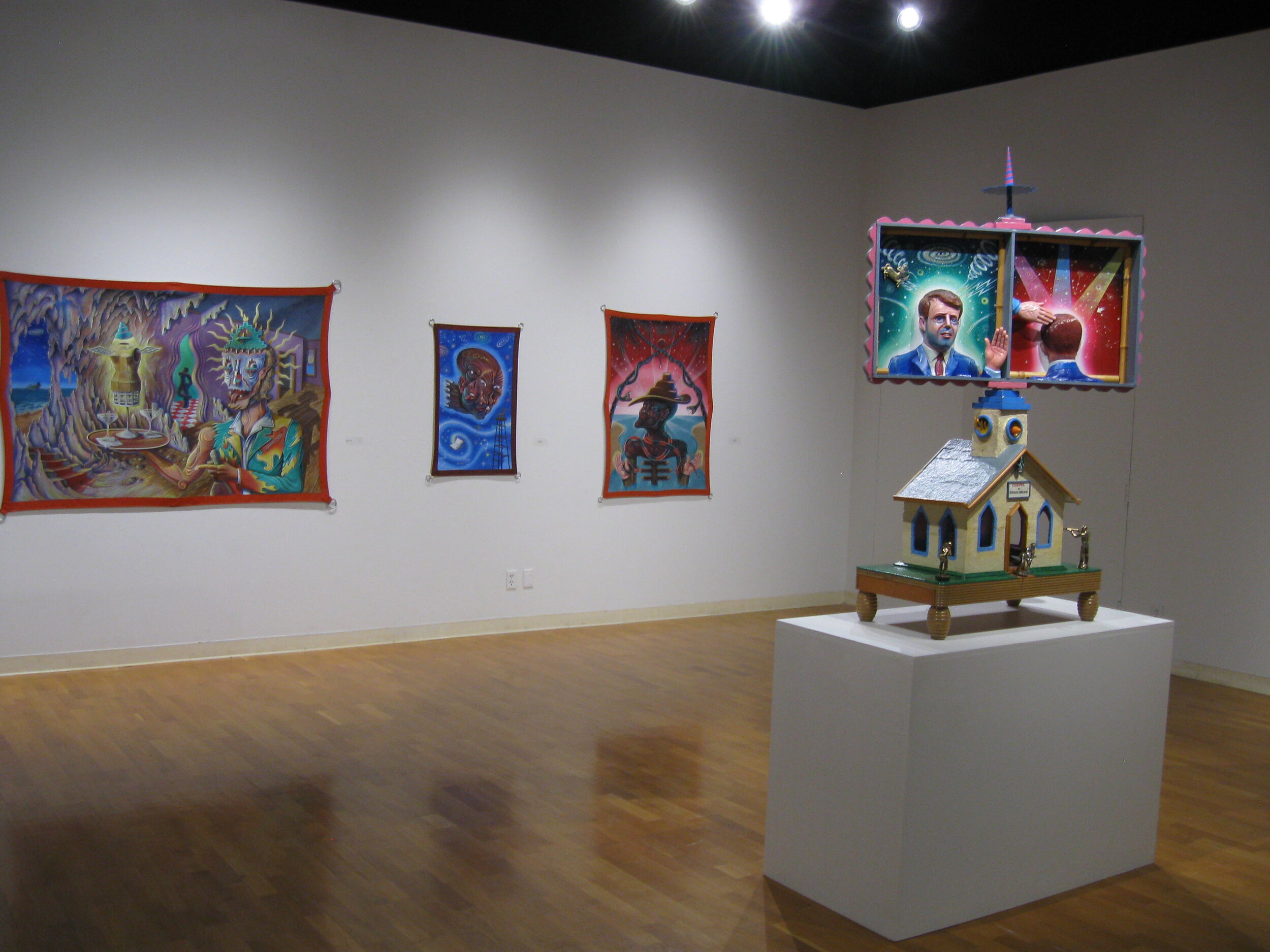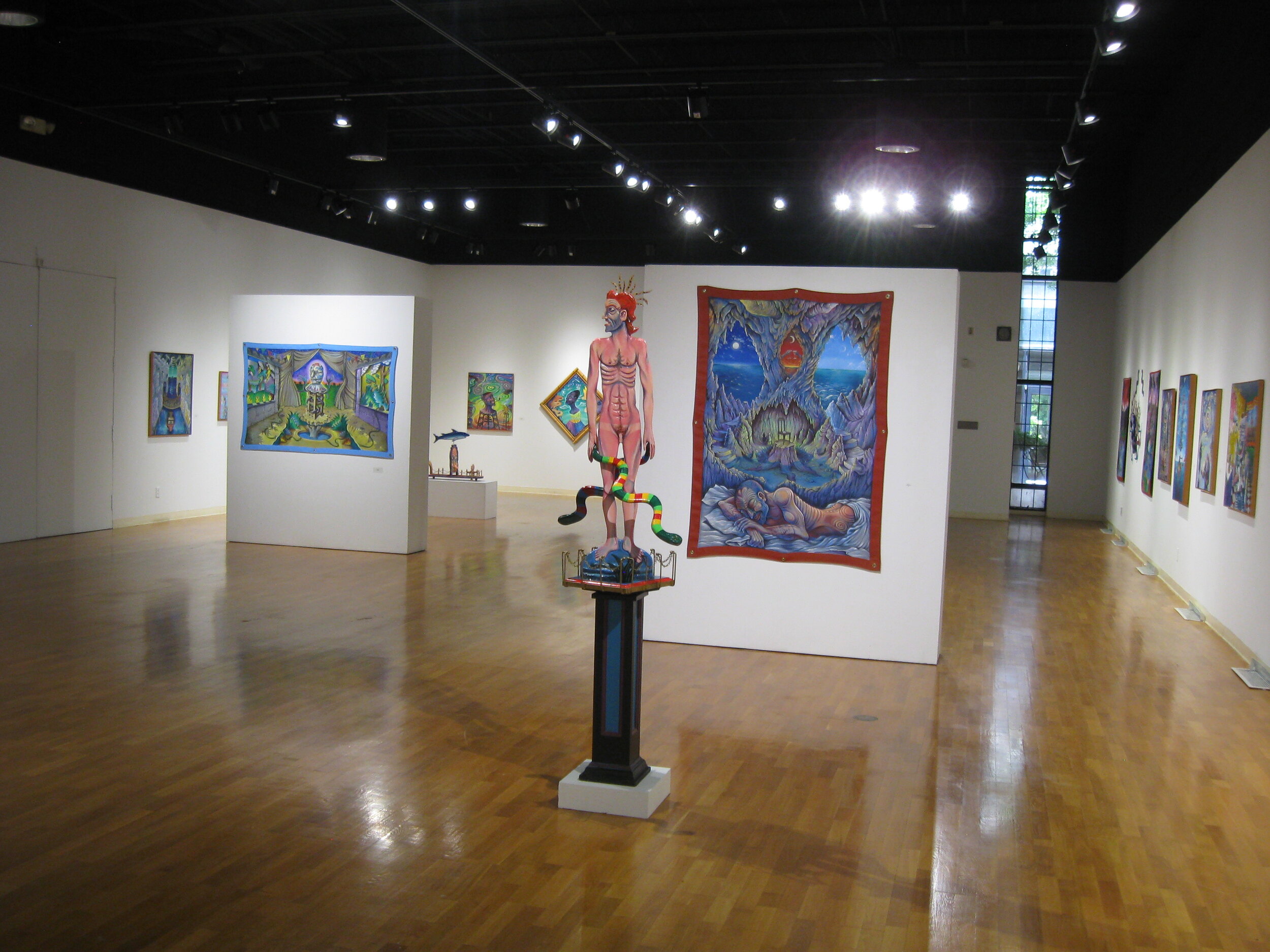Alpha and Omega, 2001, 60” x 72”, Acrylic on Canvas
Alpha and Omega: 45 years of works by Glen C. Davies
The Forsaken One, 1980, 31” x 24”, Oil on Panel
Step right up. Witness the trials and tribulations of human existence as told for us through the visionary work of Glen C Davies. Extraordinary, epic, hallucinatory, magical are all words that describe their captivating shout. Davies' work, like the carnival barkers of old, call us to come see what's inside the tent, behind the banner. Perhaps we will recognize ourselves, our hopes and fears, indecision and indiscretions grandly wrought; our transitory nature given transcendent punch! Confusion and distortion abound in Davies' work. Appearance may deceive. This is the paradox of both their seduction and caution. Our sense and perception, put on alert, look for the real among the imaginary; the anchor that might ground us in his turbulent, stormy world. We search for signs, clues and markers to help us unravel the story. Davies’ paintings, drawings and sculptures are entrances for stories; when we tumble into them, for there is no other way than to tumble, we fall into their existential resonance.
In Glen Davies' work we meet Everyman, a character from medieval theater brought forward to the present as the dramatis personae of his paintings and drawings. In the medieval play, Everyman must defend his piety when Death comes to announce his day of reckoning is near. The dramatic action is his search for witnesses who will accompany him when he must give that final tally of his life's virtue and deeds. Davies' Everyman, an average Joe in our terms, is someone trying to get ahead in his world; perhaps getting distracted, or losing his ethical compass that direct his actions and deeds along the correct path. Like the medieval world view, Davies' images are infused with some of the same magical and divine drama, now mixed up with the loud profanity of fun house gags and seedy side shows. Witness Mystery Man, an early painting from 1972 that introduces us to his character. He is part crooner and part carney, with a mystical question mark furrowing his brow.
The Fall Of Man, 1973, 13.5” x 14.5”, Oil on Panel
In Davies’ work, we often meet his characters poised in crises—at a crossroads, on a precipice, the brink of something catastrophic or life-changing. It is all vividly rendered, tethered to expressive, often grotesque forms, vibrant colors, exacting line and a love of urgency. Everyman isn't a protagonist per se, but more a device that shifts our focus to the events and story lines surrounding him. Often Davies’ characters are bound and blindfolded, or they are dreaming, sleeping, lost in their own revery. They rarely seem to act of their own agency, but are acted upon by remarkable situations. In this way I think of these scenes as psychic landscapes revealed—Everyman's internalized theater.
Prophet of the Wilderness, 1973, 13” x 13.5”, Oil on Panel
Centrality and symmetry are important to Davies' compositions. His dramas unfold between parted curtains or in cave openings, at crossroads or between arching trees. We are always directed to the central action or figure, the center stage, which should give us clues and answers to the dilemma presented. But they do not. Unlike the intended message of religion images or advertising campaigns, Davies dramas are both physically and narratively ambivalent, where belief, doubt, and ecstasy are constantly, deliciously suspended.
Recent examples of that ambivalence are two drawings with collage from 2015. In Ladies Choice, a sunset paradise of palm trees and swallows surrounds a roulette wheel of grim-faced men. In the center is one lone woman, blindfolded and gagged, who must somehow choose a suitor under very handicapped circumstances. In Penelope, we meet another heroine swarmed by suitors. In the Greek story, Penelope fends off her admirers, under the hope that her husband Odysseus, long considered deceased, will eventually return to her. In Davies' image she is a broken road-side billboard, her fidelity running wild in the dogs racing down the road. More telling is that her face is partially composed of some of the same grime-faced men from Ladies Choice, suggesting how her role is defined by the men that surround her. In Prodigy, a banner painting from 2015, a many-headed snake-charmer serpent-like creature plays a mad violin. This performer is held up by many hands—the many nameless, unsung supporters on the road to fame whose sacrifices are eloquently depicted in the tattoos of chains, barbed wire, knives and snakes that encircle their arms.
When we look patiently we can slow down the dense, clamoring work and begin to decipher Davies' vocabulary of forms and gestures. His work reveals itself on many levels. First, the carnivalesque atmosphere that us lures us with promises of astonishment and pleasure. Like the carnival banners from which Davies’ draws inspiration, bold colors and over-the-top
depictions tell us to suspend any disbelief about what is real and fiction. We enter willingly; hopeful for a thrill. If we continue to look and we can recognize the unfolding of formal unity against visual exuberance. Our eyes track around from the central action to the supporting players, props and scenery. The floating, swirling, imaginal objects and settings in Davies’ work offers up potent metaphorical possibilities.
Vanity, 1978, 52” x 47”, Oil on Panel
The final unfolding involves that underlying message about life that resides behind the masks and accoutrement of the players. Beyond the superlatively flamboyant surface, full of human oddity and base desires, the wonderful and magical reside. Davies' work is rooted in a deep compassion for human foibles, giving us a sympathetic view and perhaps a remedial route out of the dilemma. In titles that refer to broken dreams, expulsion, fortune, escape, seduction and war, we encounter turning points in our lives. Davies’ works with very common tropes—visual and literary devices as old as the hills—that slip and slide between symbolic mystery and visual pun. From beginning to end, from our first glance to our deep falling within, we move through these exuberant trouble worlds with all the expectation of a child on a carnival attraction. The painting, Alpha and Omega, the titular work for this exhibition, is that ride made manifest. Here empty boats endlessly circle the crumbling, rickety facade and perilous spiral of the central mountain. This is simply our life journey—difficult at times, perhaps monotonous, cobbled together with the resources at hand. But it is not a hopeless journey for the sky is blue and the sea is calm and inviting. Within the scene are offers of hospitality and pleasure and at the apex, a single radiant beam streams heaven-ward. Not such a bad place after all! This is Davies’ gift, his drive and need; to be a believer in the inexplicable mystery of existence; terrible, thrilling and awesome.
Doug Stapleton
Associate Curator of Art, Illinois State Museum
Creation: Mind of Matter, 1992, 47” x 70”, Acrylic on Canvas




















